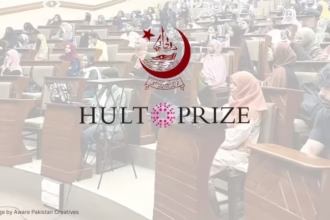The world has witnessed a boom in development after industrialization through introducing state of the art methods. Although these developments introduced a new phase in history, they also brought many challenges such as poverty, hunger, lack of education and gender inequalities etc.
In 2000, all 191 members of the United Nations committed to assisting in the achievement of the millennium development goals established by the UN by 2015. Millennium Development Goals (MDGs) were the eight goals with a primary focus on eradicating poverty and hunger, reducing inequalities, child mortality rates, combating HIV, malaria and other diseases. The MDGs proved to be the driving force behind the substantial progress in reducing poverty, providing free primary education, reducing child mortality rate and most importantly in reducing the disease rate related to HIV and malaria. These MDGs were replaced by Sustainable development goals (SDGs) in 2016. The 17 SDGs serve as a road map for achieving a sustainable future as they address global issues. The most important global issues are poverty, inequality, environmental degradation etc.
Pakistan is ranked 134th out of 193 countries in the SDG global index because Pakistan is not putting substantial efforts to achieve the prioritized SDGs.
Pakistan, the world’s fifth most populated country, is dealing with a slew of challenges while having a young population of 64% (a massive human resource). The most pressing challenges are those concerning sustainability. Pakistan has been working to achieve the SDGs at the national level by the formation of the Parliamentary SDGs Secretariat at the National Assembly. Pakistan’s Planning Commission is responsible for implementing the SDGs, considering Vision 2025 as the launching pad for the fulfilment of SDGs. Pakistan has prioritized SDS — 1: no poverty, 3: Good health and well-being, 4: Quality education, 6: Clean water and sanitation, 8: Decent work and economic growth and 16: Peace, justice, and strong institutions.
Unfortunately, Pakistan is ranked 134th out of 193 countries in the SDG global index because Pakistan is not putting substantial efforts to achieve the prioritized SDGs. There is a multitude of reasons for the lack of effective implementation of the SDGs, but the most prevalent is opposition to reforms by political elites motivated by personal or corporate interests.
SDG 1 focuses on eradicating poverty throughout the world. The international poverty line is currently $1.9 per day. A person who lives below the poverty level is assumed to be poor. In Pakistan, poverty has risen from 4.4% to 5% by 2020, with over 2 million people living below the poverty line, according to the World Bank’s data. According to The Global Hunger Index 2021, Pakistan ranks 92 out of 116 countries, with a score of 24.7 indicating a serious level of hunger due to the direct influence of poverty on hunger (SDG 2).
Pakistan has the world’s second-highest number of out of school children with 22.8 million approximately from age 5 to 16.
SDGs – 3 aim to enhance nutrition, lead healthier lifestyles, promote well-being for all ages, and ensure the availability and sustainable management of water and sanitation for all by 2030. Pakistan’s GDP spending has consistently been lower than what the WHO recommends. In the fiscal year 2020-21, the health sector received 0.4% of the overall budget. Covid-19 pandemic was the reason behind the 11% increase relative to the FY2019-20.
SDG 4 ensures that everyone has access to a high-quality education that is inclusive and equitable. However, according to The Economic Survey 2020-21, Pakistan’s literacy rate remains stagnant at 60%, with a 29.6% decline in education-related spending as the budget allocated for FY2020-21 is RS 83.3 billion that is 2.8% of GDP. The right to education is guaranteed by Article 25 A of Pakistan’s constitution, which states:
“The State shall provide free and compulsory education to all children of the age of five to sixteen years in such manner as may be determined by law.”
Sadly, Pakistan has the world’s second-highest number of out of school children with 22.8 million approximately from age 5 to 16.
SDG 6 guarantees that everyone has access to safe drinking water and sanitation. Pakistan’s condition is worse in terms of reaching Goal 6 since 21 million people lack access to safe drinking water, according to Water Aid. As a result, drinking polluted water causes 40% of all infections in Pakistan, according to UNESCO. On the other hand, 79 million individuals lack access to a proper toilet. This condition contributes to other diseases and bacterial infections, as ‘diarrhea’ kills 16,800 children under the age of five each year, Water Aid says. According to UNICEF, due to lack of resources and cleaning facilities, 75% of women stay at home during menstruation. Females frequently use homemade sanitary pads, and because they are reused, they are more vulnerable to vaginal infections.
In light of the above-stated facts and figures, it is clear that Pakistan is facing a hurdle in achieving the SDGs, which has a serious effect on sustainable development. To achieve sustainable development, the government may play a critical role by developing and executing state of the art policies, as well as cooperating with the private sector, civil society, and citizens to ensure that development is sustainable for today and the future.


